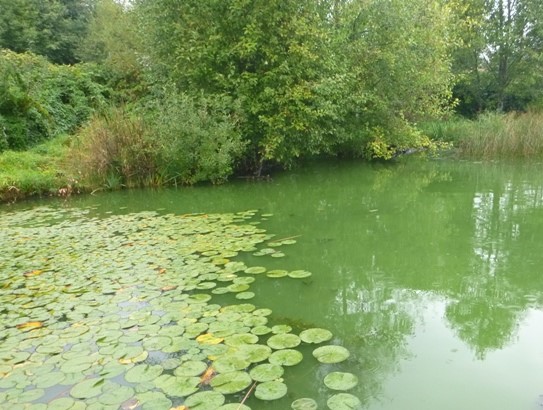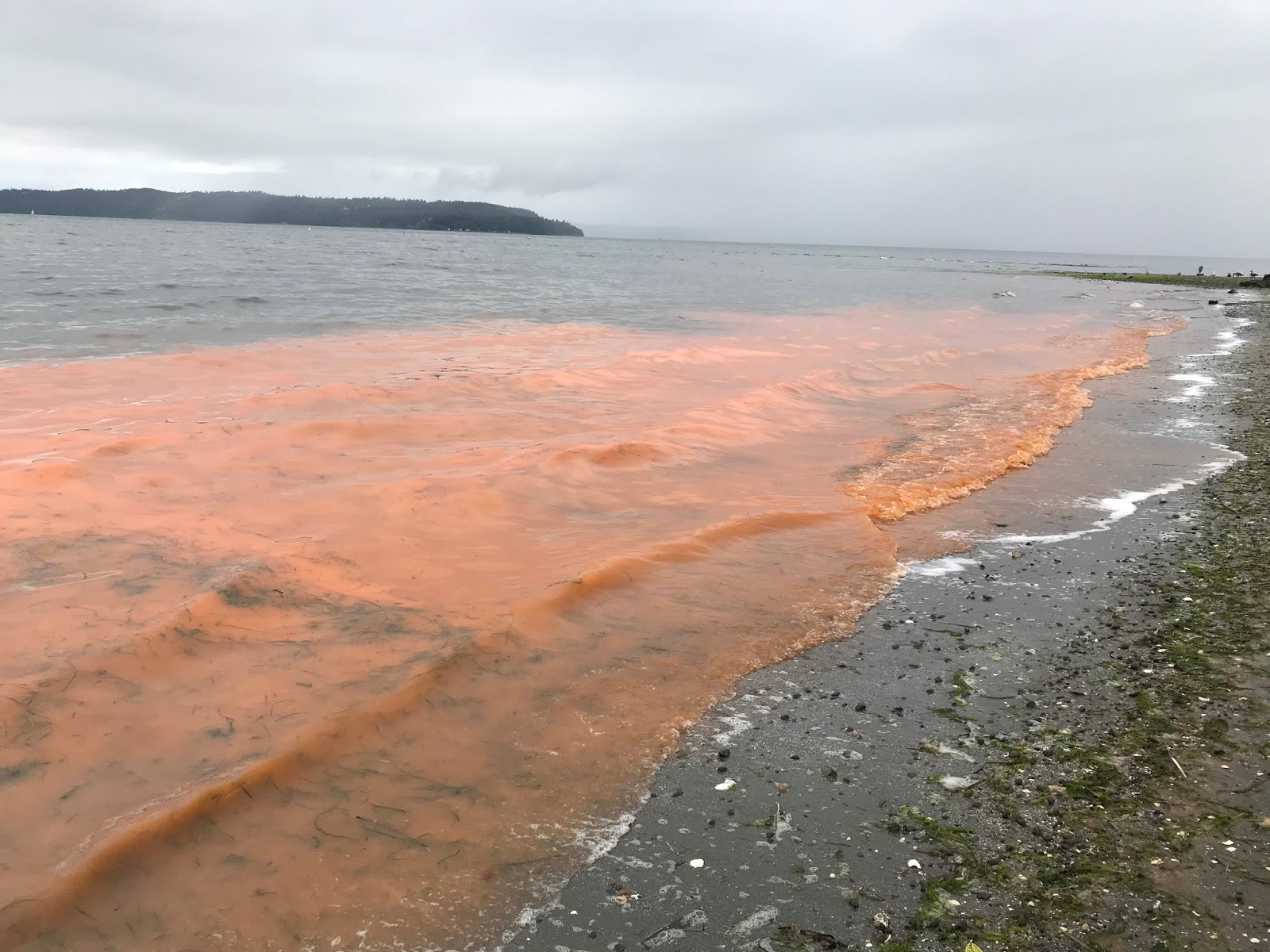
Once again, it is time to keep an eye out for harmful algae (cyanobacteria) blooms in Washington lakes and rivers. As the weather heats up, these blooms can happen, especially in late summer and fall. However, it’s impossible to guess how each lake or river will be affected due to changing climate conditions and human-caused excess nutrient pollution. Some lakes bloom regularly, some lakes rarely have blooms, and not every bloom is toxic. The only way to know for sure that toxins are present in an algae bloom is through laboratory testing. When in doubt, keep yourself and your pets safe by avoiding water with algae blooms and pay attention to warning and closure signs.
What are harmful algae blooms?
Algae are simple plants and bacteria that are a natural part of the ecosystem, but certain conditions can cause algae to multiply too quickly, resulting in an algae bloom. Algae blooms can happen in both fresh and saltwater. Blooms often indicate that the ecosystem is unbalanced and can create issues in the food web and reduce oxygen in the water. However, only some blooms have the potential to be toxic to humans, pets, and wildlife, which is why they are (appropriately) called harmful algae blooms. The Washington State Toxic Algae website has more information about harmful algae. See our information below about a common non-toxic algae bloom (Noctiluca) we often see in Puget Sound.
- The appearance of slimy scum, foam, or growing clumps on the water
- Algae color can vary — blue-green, reddish-brown, pea soup green
- Looks like a paint spill on the water
Cyanobacteria are often confused with green algae, because both can produce dense mats that can get in the way of swimming and fishing. However, unlike cyanobacteria, green algae do not generally produce toxins.
Additionally, be aware of these possible signs that you or your pet may have been exposed to a harmful algae bloom:
- Skin rashes after being in the water
- Sudden, unexplained sickness after drinking or playing in the water
See a bloom, give it room
Because harmful algae blooms can only be accurately identified by lab tests, when you can, it’s best to avoid going into water with algae blooms. If you suspect you or your pet have been exposed to a harmful algae bloom, rinse off with clean water and seek appropriate medical attention.
If you spot a bloom, contact the local lake manager. This could be the county public health department, city, or state park, depending on the lake or river. Because there is no statewide, comprehensive monitoring program, reporting blooms can be helpful. Check with your local municipality see if they have more information or monitoring data on a particular lake or river.
Harder than predicting the weather
There are multiple factors that combine to create a harmful algae bloom in freshwater lakes and rivers. Generally, excess nutrients (especially phosphorus) are one of the major components, and these nutrients often come from human sources (runoff). If the nutrient levels are high enough, then other factors like weather conditions and water flow changes can also trigger a bloom.
Even though we know generally what issues cause blooms, how all of the factors come together to create a certain bloom on a particular lake are still not well understood, which is why they are hard to predict. A lake with normal levels of nutrients during springtime can still get an unexpected bloom during the summer due to nearby urban development and runoff. Similarly, a lake with high levels of nutrients can avoid a bloom if certain weather conditions are not met. There are too many elements involved in the production of a harmful algae bloom to accurately predict when and where they will occur.
How algae blooms can be prevented
While the precise triggers of harmful algae blooms are hard to pinpoint, there are still steps you can take to prevent water quality from worsening and reduce a lake’s chances of developing a bloom. Keep in mind, each lake and river has unique circumstances and needs, so not every prevention step can be applied everywhere.
- Clean up pet waste.
- Maintain your septic system to prevent leaks.
- Do not feed water fowl, like ducks and geese.
- Reduce or eliminate the use of fertilizers.
- Wash vehicles away from the lake or storm drains.
- Maintain native vegetation around the lake.
Only time will tell if this will be a big year for algae blooms. If you want to learn more see our related links at the top of the page.
A bloom of a different color
Around Puget Sound, a fairly common sight in spring and summer months is bright red tomato-soup-like salt water, often along the shore. While it may look alarming, this isn't a harmful algae bloom, it is caused by a particular species of algae called Noctiluca. Noctiluca is a single-celled organism, in a group called dinoflagellates that live in marine water. While this bloom isn't toxic to people or pets, Noctiluca does contain ammonia which make them unappetizing for other species to eat. Also, studies have shown this ammonia can have a negative impact on juvenile fish swimming in the bloom.
While Noctiluca are naturally occurring and blooms have been observed and recorded in Puget Sound since the 1940s, there is growing concern that human-caused excess nutrients are increasing the intensity, changing the timing, and increasing the spatial distribution of Noctiluca blooms.
Eyes over Puget Sound takes to the air once a month to obtain high-resolution aerial photographs, record observations, and gather water quality data at 37 remote marine monitoring stations to track and record how weather and climate are shaping Puget Sound water quality.





